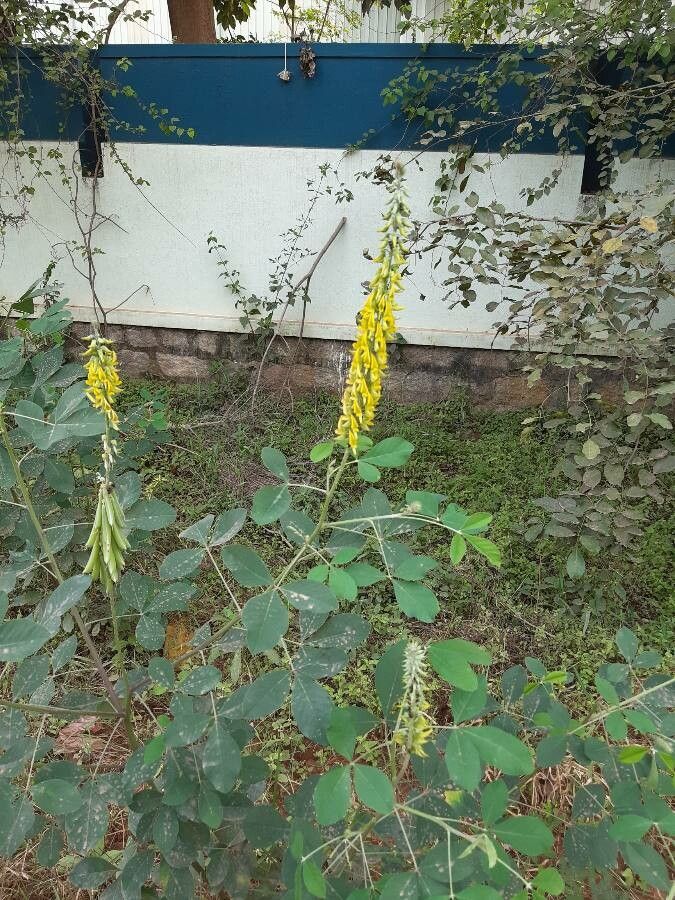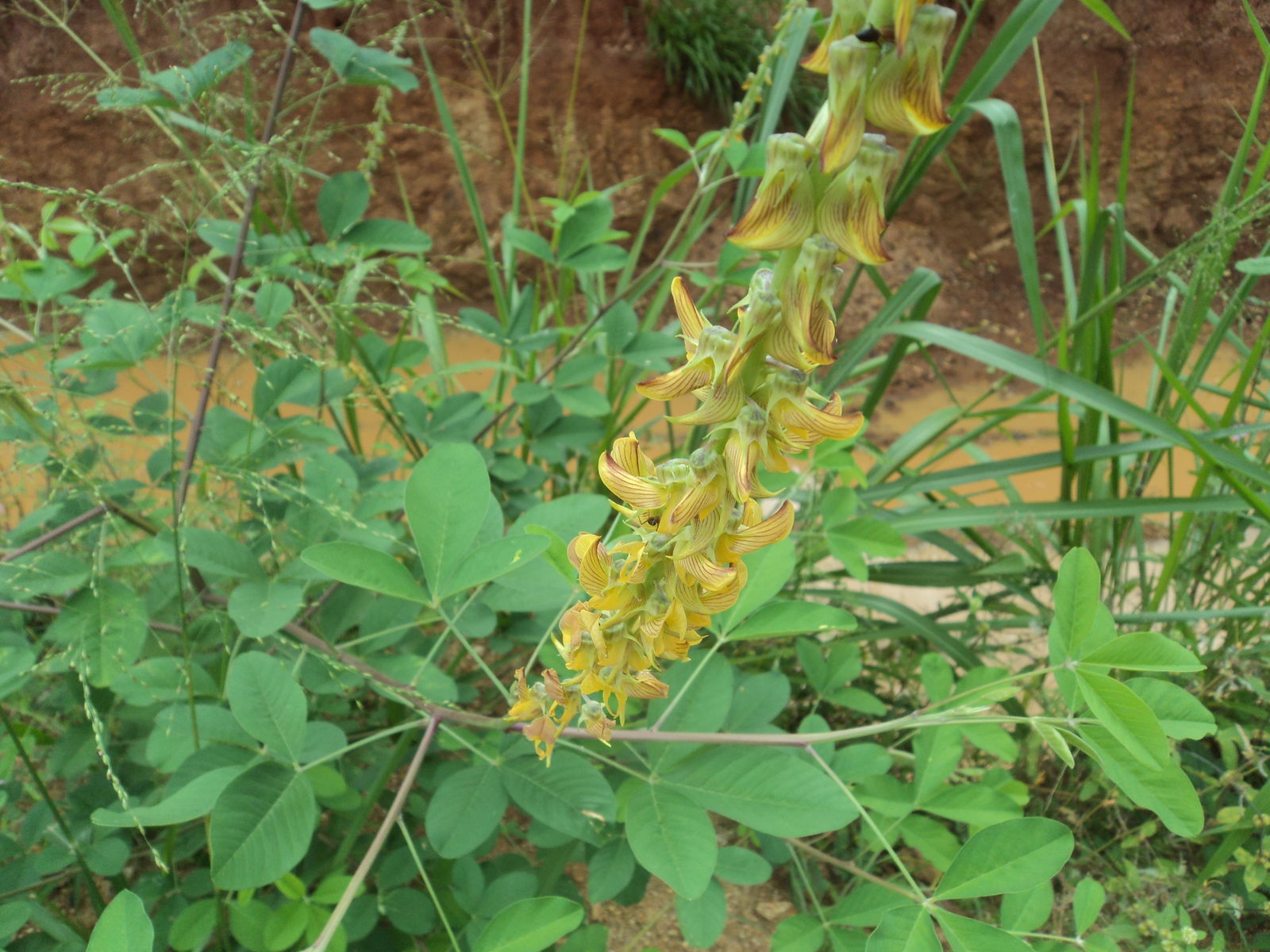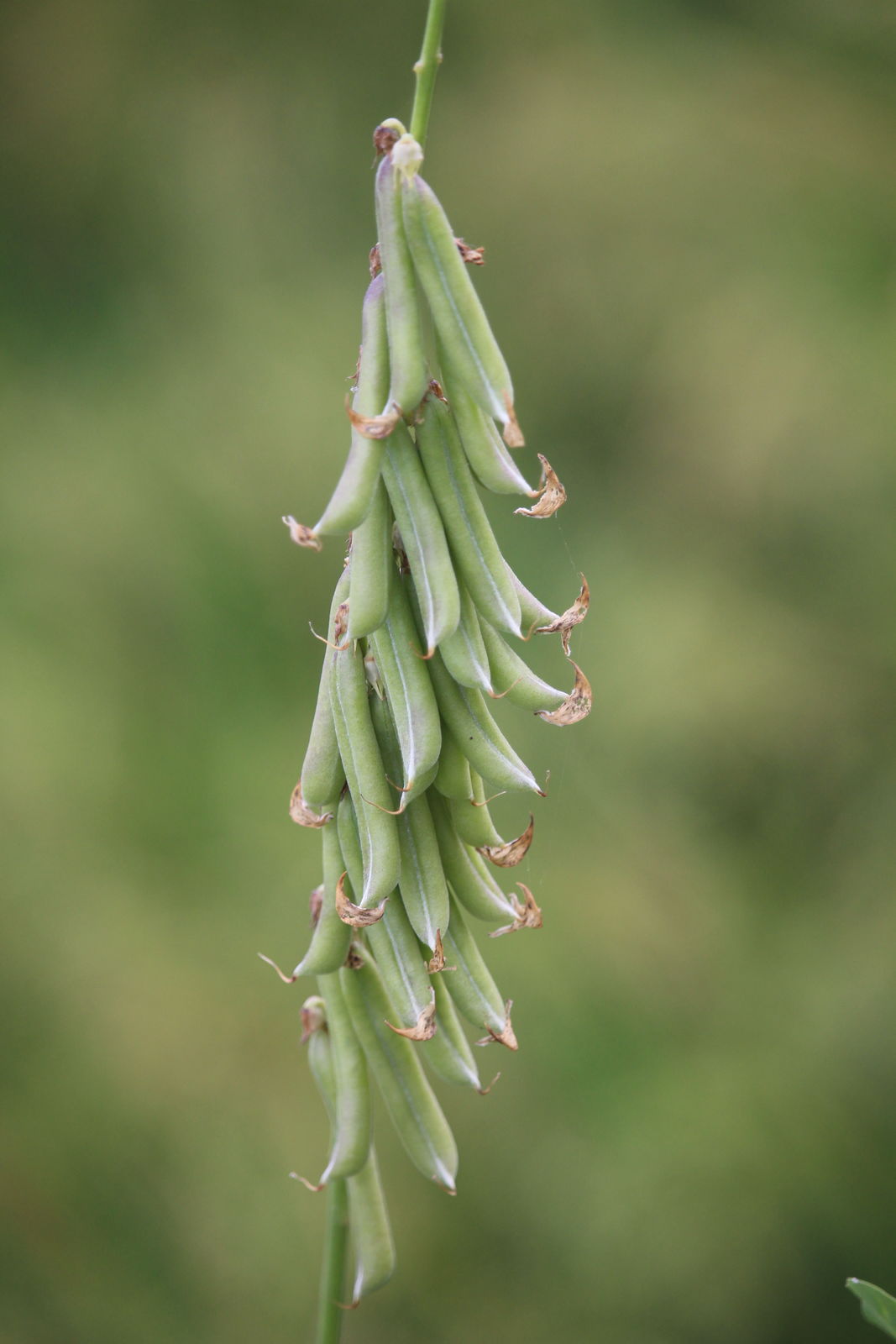Rattlebox
crotalaria pallida
Also known as: ["Yellow Rattlebox","Sundial Rattlebox"]
Overview
A leguminous plant with yellow flowers and toxic seeds, often found in tropical and subtropical regions.
Benefits & Perks
["wildlife attractant (bees, butterflies, birds)","drought tolerant"]
Botanical Classification
| Phylum: | Magnoliophyta |
| Class: | Magnoliopsida |
| Order: | Fabales |
| Family: | Fabaceae |
| Genus: | Crotalaria |
| Botanical Name: | Crotalaria pallida |
Plant Characteristics
Basic Information
- Category: Flowers
- Suitable Location: outdoor garden bed in temperate to tropical regions
- Suitable For:
- Is Weed: No
- Allergenicity: low
Environmental Needs
- Climate: {"temperatureRange":"15–35°C"}
- Hardiness: {"zones":"9–11"}
- Misting: rarely required, only if ambient humidity is very low
- Drainage: Fast-draining to prevent waterlogging.
- Soil Type: Well-draining, loamy soil with added organic matter; can tolerate poor soils but performs better with amendments.
Maintenance Level
- Maintenance Level: moderate
- Toughness Level: moderate
- Pruning Frequency: Light pruning can be done anytime; major pruning in late winter or early spring before new growth begins.
- Pruning Intensity: Moderate; remove up to one-third of the plant if overgrown, but avoid heavy pruning during flowering
Care Details
Ideal Sunlight Coverage:
Full sun (6–8 hours of direct sunlight daily); tolerates partial shade but may flower less.
Sunlight Tolerance Tips:
Acclimate plants gradually to intense sunlight; protect from harsh midday sun in hot climates; ensure good air circulation to prevent leaf scorch.
Care Requirements
Care Difficulty
moderatemoderate
Sunlight
full sun to partial shade
Rotate plant for even light exposure; use shade cloth in extreme heat; avoid placing near reflective surfaces that intensify sunlight.
Watering
every 7–10 days during active growth, reduce in winter
Water thoroughly but infrequently; ensure good drainage; avoid wetting foliage to prevent fungal issues.
Soil
well-drained, sandy loam with moderate organic content
pH: Slightly acidic to neutral (pH 6.0–7.0).
Avoid heavy clay soils; ensure pots have drainage holes; top-dress with compost annually.
Temperature
Prefers warm temperatures (65–85°F or 18–29°C); thrives in tropical to subtropical climates.
Avoid sudden temperature fluctuations; protect from frost; ensure good air circulation in hot weather.
Fertilizing
every 4–6 weeks during growing season, none in winter
Apply fertilizer after watering to prevent root burn; use a nitrogen-rich fertilizer sparingly to avoid excessive foliage growth at the expense of flowers.
Propagation
Methods
Stem cuttings or seed; stem cuttings are faster and more reliable for home growers.
Step-by-Step Propagation Guide
- Take a 4–6 inch cutting just below a node.
- Remove lower leaves.
- Dip in rooting hormone.
- Plant in moist medium.
- Keep consistently moist and warm.
Best Time: Spring or early summer when the plant is actively growing.
Environment
Warm (70–75°F or 21–24°C), humid, and bright but indirect light; protect from drafts.
Medium
Well-draining potting mix with perlite or sand; can also root in water initially.
Hormone
Rooting hormone is recommended to improve success rates.
Timeline
Roots may appear in 2–4 weeks; new growth in 6–8 weeks; establish in 3–4 months.
Tools Needed
Pruning shears, rooting hormone, small pots, well-draining medium, plastic wrap or propagator.
Quick Tips
Use sterile tools to prevent disease; maintain high humidity around cuttings; avoid direct sunlight to prevent wilting.
Pruning & Repotting
Pruning Guide
Method
Use clean, sharp tools; make cuts just above a leaf node or bud; remove crossing or crowded branches to improve air circulation.
Pruning Plan
Prune to maintain shape, encourage bushier growth, and remove dead or diseased parts; focus on removing spent flowers to promote reblooming.
Tools
Pruning shears, bypass cutters, gloves, disinfectant for tools.
Checklist
Disinfect tools before use; prune during dry weather; remove dead or damaged growth first; shape the plant gradually.
Repotting Guide
Best Season
Early spring before the growing season begins.
Pot Size
Choose a pot one size larger (1–2 inches wider in diameter) than the current one.
Method
Remove the plant gently; trim any circling roots; place in a new pot with fresh, well-draining soil; water thoroughly after repotting.
Suggestions
Repot every 2–3 years or when roots fill the pot; beneficial for container-grown plants to refresh soil and provide space.
Checklist
Select a new pot with drainage holes; prepare fresh soil mix; water the plant a day before repotting; handle roots carefully.
Advanced Care Tips
Watering Mastery
Watering Checklist
Check soil moisture before watering; water early in the day; ensure proper drainage; avoid overhead watering.
How to Apply Water Properly
Water at the base of the plant, ensuring moisture reaches the root zone; allow excess water to drain away; water in the morning to reduce evaporation and fungal risk.
Watering Schedule Tips
Water deeply once the top inch of soil is dry; reduce frequency in winter to prevent root rot.
Soil Improvement
Add compost or well-rotted manure for fertility; mix in perlite or sand for drainage; ensure soil is loose and airy.
Temperature Stress Management
Signs of Temperature Issues
Wilting, leaf drop, or cessation of flowering in extreme heat or cold; yellowing leaves in cold stress.
Cold Stress
Growth slows or halts; leaves may turn yellow or brown; plant becomes more susceptible to pests and diseases.
Solution: Move potted plants indoors or to a sheltered location; provide a heat source if temperatures drop below 50°F (10°C); use frost cloth for outdoor plants.
Hot Stress
Leaves may wilt, curl, or scorch; flowering may be reduced; soil may dry out too quickly.
Solution: Provide afternoon shade; increase watering frequency; mulch to retain soil moisture; use a fan for air circulation in indoor settings.
Fertilizing Guide
Fertilizing Checklist
Check fertilizer label for NPK ratio; water plant before fertilizing; apply evenly around the root zone; rinse tools after use.
Fertilizing Method
Use a balanced, water-soluble fertilizer diluted to half strength every 4–6 weeks during the growing season; avoid fertilizing in winter.
Common Problems & Solutions
Toxicity Warning
Cats
ToxicCrotalaria pallida is toxic to cats due to its pyrrolizidine alkaloid content, which can cause severe liver damage and failure. Cats are particularly sensitive to these compounds.
⚠️ Symptoms:
🌿 Toxic Parts:
⚡ Toxic If:
if eaten
Dogs
ToxicThe pyrrolizidine alkaloids in Crotalaria pallida are toxic to dogs, causing hepatotoxicity and potential liver failure. Chronic ingestion can lead to severe liver damage.
⚠️ Symptoms:
🌿 Toxic Parts:
⚡ Toxic If:
if eaten
Humans
ToxicCrotalaria pallida contains pyrrolizidine alkaloids, which are hepatotoxic and can cause liver damage upon ingestion. Chronic exposure may lead to severe liver fibrosis and cirrhosis.
⚠️ Symptoms:
🌿 Toxic Parts:
⚡ Toxic If:
if eaten
Frequently Asked Questions
Q: Is Crotalaria pallida safe for pets?
A: No, it is highly toxic to dogs and cats.
Q: What are the uses of Crotalaria pallida?
A: It is primarily used in wildlife gardens to attract pollinators, but its seeds are toxic.
Q: How should Crotalaria pallida be cared for?
A: It requires moderate care, including well-drained soil and full sun exposure.
Quick Reference
| Family: | Fabaceae |
| Care: | moderate |
| Light: | full sun to partial shade |
| Water: | every 7–10 days during activ |
Get Expert Care Tips
Download the Plantious app for personalized care reminders and plant identification!
Google Play App Store








